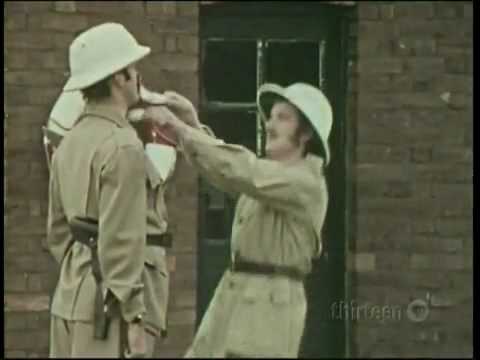https://core.ac.uk/download/pdf/94982300.pdf
"Gunslinger’s gait": a new cause of unilaterally unilaterally reduced arm swing. BMJ Online 351:h6141 · Dec. 2015 R.Araujo, J.J.Ferreira, A.Antonini, B.Bloem
“…an asymmetrically reduced arm swing …can be the earliest presenting sign of Parkinson’s disease…
We propose that this new gait pattern, which we term "gunslinger’s gait," may result from a behavioural adaptation, possibly triggered by KGB or other forms of weapons training where trainees are taught to keep their right hand close to the chest while walking, allowing them to quickly draw a gun when faced with a foe. This should be included in the differential diagnosis of a unilaterally reduced arm swing.”
—=-
In October 2002 I had been told that I had a ‘tic’. The report from this first appointment with a movement disorder specialist noted Dystonia, Myoclonus and Chorea.
In December 2002 I was given a drug called Sulpiride.
By mid-September 2003 the physiotherapist noted the following : s tiff right elbow , ache in right shoulder blade,
bilateral shoulder pain, chest pain, difficulty walking, tension in shoulder, food gets stuck at back of tongue , can go down wrong way, choking, stiffness in arms/neck worse when walking, neck pain, tightness right side of neck
neck flexed, right arm flexed at elbow, bilateral shoulder girdles elevated, no armswing right.
By January 2004 the speech therapist had also noted drooling and another physio noted reduced trunk rotation.
No-one told me anything about tardive dyskinesia or parkinsonism
Sulpiride in tardive dyskinesia . Casey DE, Gerlach J, Simmelsgaard H. Psychopharmacology (Berl). 1979;66(1):73-7.
Tardive dyskinesia can be suppressed by drugs that block dopaminergic receptors, but often at the cost of a concomitant increase in parkinsonism.
Tiapride in levodopa-induced involuntary movements A.J. LEES, C. M. LANDER, AND G.M.STERN Journal of Neurology, Neurosurgery,and Psychiatry, 1979, 42, 380-383
The therapeutic possibilities of selective dopamine receptor blockade led to the use of haloperidol (Klawans and Weiner,1974) and pimozide (Tarsy et al., 1975) in the treatment of levodopa-induced peak dose dyskinesias.
Both drugs effectively suppressed involuntary movements but caused an unacceptable increase in disability
from Parkinsonism.
A double blind trial of sulpiride in Huntington’s disease and tardive dyskinesia N Quinn and CD Marsden Journal of Neurology, Neurosurgery, and Psychiatry, 1984, Vol 47, 844-847
The low incidence of drug-induced parkinsonism in Huntington’s disease patients may simply be a reflection of the difficulty of recognizing it in the presence of marked chorea
By contrast, signs of emerging or worsening parkinsonism were seen in seven of the nine tardive dyskinesia patients.
In five of them it was evident after only two weeks treatment with sulpiride
The dystonias .C.D.Marsden and N.P.Quinn. BMJ 1990 Jan 20; 300(6718): 139–144.
Dopamine receptor agonists or neuroleptics or such as phenothiazines, haloperidol, or pimozide are also sometimes useful. Often they act non-specifically, damping down excessive movements by causing a degree of drug-induced parkinsonism; there is also the risk of adding a tardive dyskinesia to the dystonia.
Parkinson’s Disease and other Movement Disorders M.J Edwards, M. Stamelou, N.Quinn, K.P Bhatia OUP 2016
p.129 Sulpiride Main side effects: extrapyramidal side effects (parkinsonism, acute dystonic reactions, tardive dyskinesia, akathisia) …Neuroleptic malignant syndrome is a rare, but important side effect
